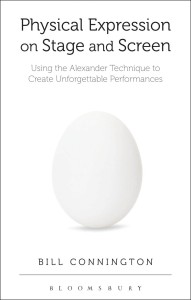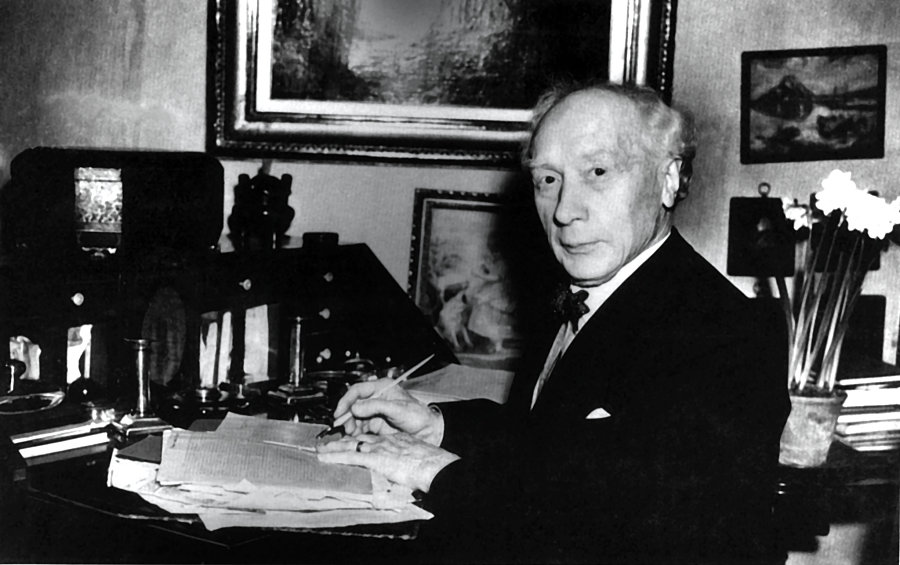THE ACTOR’S SECRET
By Betsy Polatin. North Atlantic Books, Berkeley, Calif., 2013.
296 pp., $17.70 paper.
PHYSICAL EXPRESSION ON STAGE AND SCREEN
By Bill Connington. Bloomsbury Methuen Drama, New York, 2014.
200 pp., $24.65 paper.
Somewhere up in theatre heaven, Frederick Matthias Alexander must be smiling. There are more than 75 books in print promoting his technique—and not just for movement, voice and acting. They also cover dance, weightlifting, pregnancy and childbirth, back problems, running, swimming, massage therapy and aromatherapy, even jazz and classical guitar. One author has written at least 15 Alexander manuals on subjects as diverse as violin, piano, French horn, flute, clarinet, multiple sclerosis, tennis, archery and target practice with a rifle. Can an Alexander guide to cooking be far behind?
This renowned method of unlocking habitual behavior and building acute sensory awareness—developed by an actor who lost his voice whenever he tried to speak Shakespearean verse—has maintained its popularity since the middle of the 20th century. If anything, the Alexander technique is now having its moment, as the concept of mindfulness is everywhere in the zeitgeist, from employee training to nearly every form of wellness. Though TedTalk superstar Amy Cuddy has awakened laypeople to the mind-body relationship with “power poses”—her talk has been viewed more than 20 million times—actors have known, probably since Thespis, that our “nonverbals” affect our own emotions as well as other people. But this isn’t just about acting: As an organic, graceful and healthy approach to freeing oneself of physical and emotional limitations, the Alexander technique has enthusiasts who claim life-changing results.
In the classroom, Alexander teachers famously realign students with their touch. The irony of the proliferation of books propounding the Alexander technique is that communicating in print the essence of a hands-on movement pedagogy has limited benefits. Yet into the teeming Alexander market have stepped two more authors, both of whom are acclaimed teachers.
 At least since Freud the word inhibition has had a bad name, but it is, according to Betsy Polatin, a professor at Boston University, the actor’s secret. For Alexander, inhibition meant withholding a habitual reaction to a stimulus. The more healthful response is to give your body the chance to pause and substitute movement that engages the cohesive action of the entire body. Polatin’s guide, The Actor’s Secret, is clear and well organized, complemented by photographs of what Alexander called “use” and “misuse.” Beginning with his five principles and progressing through breath, movement, voice and text, Polatin employs a holistic approach that also draws on the breath coordination precepts of Carl Stough and research into trauma by Dr. Peter Levine.
At least since Freud the word inhibition has had a bad name, but it is, according to Betsy Polatin, a professor at Boston University, the actor’s secret. For Alexander, inhibition meant withholding a habitual reaction to a stimulus. The more healthful response is to give your body the chance to pause and substitute movement that engages the cohesive action of the entire body. Polatin’s guide, The Actor’s Secret, is clear and well organized, complemented by photographs of what Alexander called “use” and “misuse.” Beginning with his five principles and progressing through breath, movement, voice and text, Polatin employs a holistic approach that also draws on the breath coordination precepts of Carl Stough and research into trauma by Dr. Peter Levine.
Polatin makes a solid case for including an understanding of trauma as part of diagnosing misuse; when students remember a traumatic event related to physical repression, they are on their way to correcting it. The word “trauma” may put off readers who believe it should be reserved for extreme cases of overwhelming stress. And when Polatin helps a student overcome misuse due to trauma, the process sometimes appears too easy, as if recalling the event were enough to dislodge its physical vestiges. One wishes she had described the redirecting process in greater detail.
In the prevailing American training method, actors are urged to seek connections between a character and themselves. Polatin offers an alternative method: “To understand another character, it makes sense for you first to understand your own.” An actor does so by examining her own patterns of behavior, personality or movement. Once she becomes aware of the patterns, she is free to adopt or build new ones for a particular role.
An excellent classroom exercise has actors beginning with their habitual walks, redirecting them to a more natural state, and then moving into a character walk. “When you go from your directed walk to your character’s walk,” writes Polatin, “you approach it from a more spontaneous place.”
Besides the principle of inhibition, perhaps the most significant concept in The Actor’s Secret, particularly for the actor in training, is “being with.” Instead of avoiding discomfort, the actor is advised to pay attention to and become curious about it—to be with it. “With your new awareness, you can say no, and the pain can actually shift,” Polatin writes. This allows the body to regulate itself back to equilibrium. Related to this strategy is a dictate often pronounced by teachers when an actor struggles with the circumstances of a scene: “Be where you are.” It sounds absurdly obvious, but sometimes we actors and directors ignore what is right in front of us.
For a book that originates with movement, The Actor’s Secret is impressive in the way it extends Alexander’s ideas into acting training. Polatin offers specific exercises for preparing monologues, Shakespearean text, warmups and auditions, always connecting them back to basic principles. The Actor’s Secret works both as a solid introduction to Alexander technique and an advanced guide for the more experienced actor.
 Thanks to Bill Connington’s Alexander-based book Physical Expression on Stage and Screen, I am now sitting, walking, using the stairs, eating, brushing my teeth and carrying my briefcase with more natural and healthy movement. In fact, the title for much of his book might just as easily be An Alexander Guide to Everyday Living. Devoting significant space to basic movement and breathing, Connington focuses on elementary exercises, making the technique simple and easy to grasp. For those who may be daunted by the prospect of learning a new physical language, this book is a useful introduction.
Thanks to Bill Connington’s Alexander-based book Physical Expression on Stage and Screen, I am now sitting, walking, using the stairs, eating, brushing my teeth and carrying my briefcase with more natural and healthy movement. In fact, the title for much of his book might just as easily be An Alexander Guide to Everyday Living. Devoting significant space to basic movement and breathing, Connington focuses on elementary exercises, making the technique simple and easy to grasp. For those who may be daunted by the prospect of learning a new physical language, this book is a useful introduction.
What is less clear from Connington’s book is a particular authorial voice or point of view—a reason for buying this book rather than the dozens of others on the market. As I read, I kept looking back at the cover, wondering if a mistake had been made at the bindery, as the title could just as easily promise an appreciation of famous performances on stage and screen. And for a basic text, its subtitle—Using the Alexander Technique to Create Unforgettable Performances—is the sort of publishing hyperbole that confers no favor on an author.
Connington’s Vimeo videos, designed to complement the book, exhibit his solid knowledge of Alexander technique. But neither the videos nor the book demonstrate how he teaches students to use themselves and correct misuse. (Unfortunately, Physical Expression contains no photographs.) Accolades in the front of the book attest to his teaching prowess; however, not every great teacher possesses a particular methodology that can be codified.
Handbooks are harder to write than they seem. To be more readable than product manuals and more expansive than a set of exercises, they need to display the point of view, personality and experience of the author. Toward the end of his book, Connington relies on standard acting exercises—imitating someone on a street or a famous movie star, underscoring a monologue with music, and “dancing” a scene—that feel generic. These activities may be useful in the classroom to briefly relax an actor, but on the page they don’t come across as the stuff of “unforgettable performances.”
Like blueberries and kale, Alexander work is almost undeniably good for you. If you haven’t tried it, these books are two more reasons to get started. While Connington offers a practical, easy-to-understand set of exercises for the Alexander novice, Polatin strides several steps further, elaborating the intricacies of Alexander’s principles while conveying her experience with students as they apply the technique to acting practice.
Michael Bloom is a director and writer, and the author of Thinking Like a Director.


